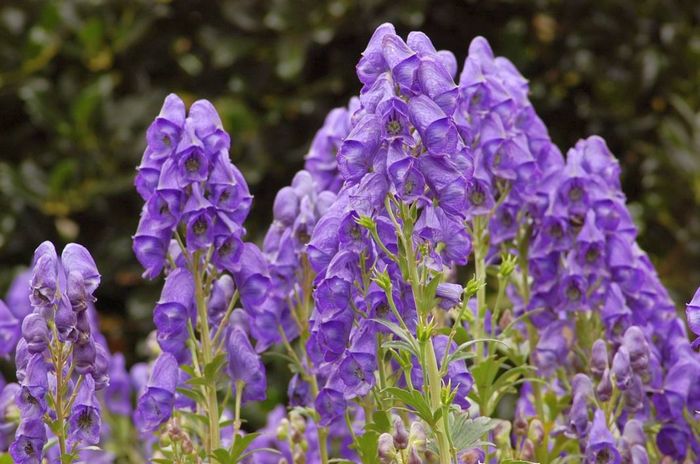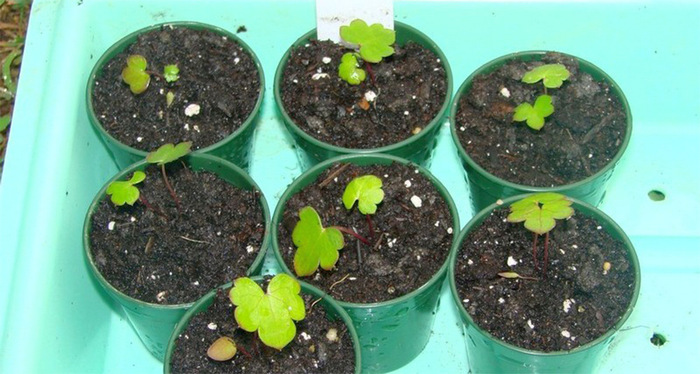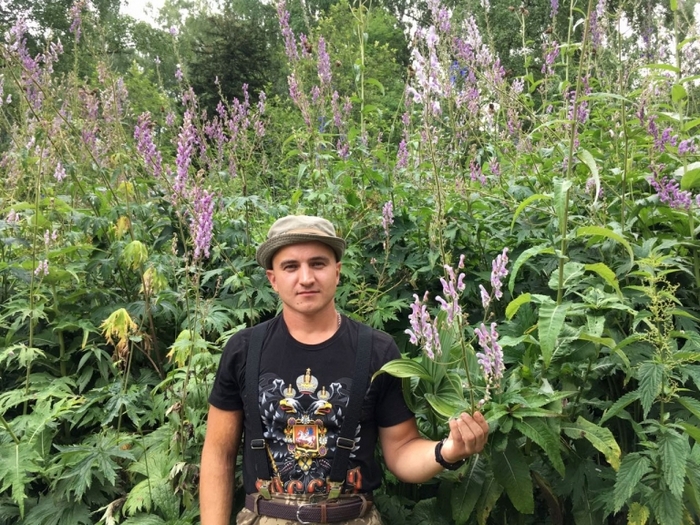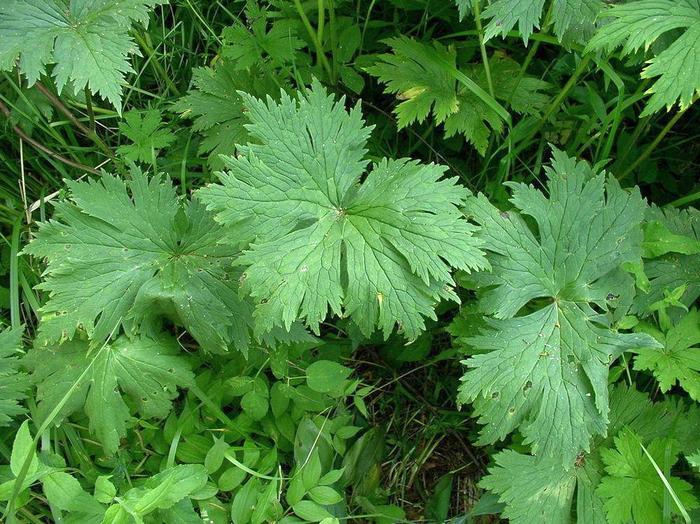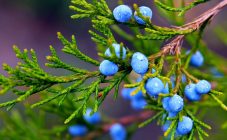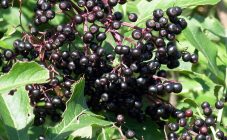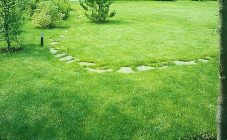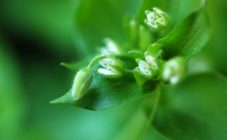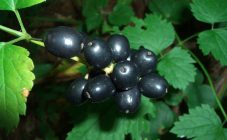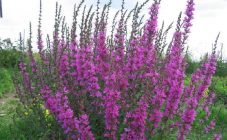Content:
Among the Buttercup family, the grass wrestler attracts attention. This perennial has long been retrained from a wild plant into a cultivated plant. It is now found in flower beds. The healing properties of aconite (this is another name for the herb) is officially recognized, it is a medicinal plant in Japan, India and many other countries.
Description of culture
A wrestler plant native to North America. But you can also find it in the regions of the temperate zone of Russia. Favorite habitats - forests, small plantings, thickets of bushes.
The herbaceous plant attracts not only with its medicinal composition, but also with the unusualness of its flowers. Finding a wrestler among plants is not difficult if you know what he looks like.
Description of aconite
| Part of the plant | Features: |
|---|---|
| Stem | Reaches 1-1.5 m in height, in the upper part has a short edge |
| Leaves | Dark green in color, 2-7 cm long and 2-10 cm wide. Finger-dissected, decorated with 3 mm linear segments. The lower ones have long cuttings |
| Flower | Irregular, where the upper petals have grown together in the form of a spherical concave hood up to 20 cm long. The nose extended forward is indicated below. Collected in cystic inflorescences from 10 to 40 cm long |
| Fruit | Pubescent leaflets for 3 nests |
| Rhizome | A chain of cone-shaped root tubers fused together |
Officially, the plant is called aconite oak. In group plantings, as well as for cutting, 2 types of wrestler are most often used:The table provides a general description of aconites. But in nature there are various representatives of wrestlers, slightly different from each other.
- Altaic - stands out with an erect stem on which dense clusters of large dark blue flowers are formed; budding occurs in July;
- nodular - the plant has not only finger-separated, but also feathery leaves; in a rare brush collected pale blue or deep purple flowers that appear in June.
There is also a Dzungarian species found in the east of Russia. He prefers to settle on the northern slopes of the hills. You can recognize it by the petals of the color of saturated ultramarine.
Reproduction
Florists have long appreciated the decorativeness of aconite and use it in landscape design. Western breeders have even bred several special species with lush inflorescences of various colors.
The wrestler is propagated by dividing the tuber, as well as by seeds, which can be immediately sown in the ground after harvesting the fruits (this period falls on September-October).
The plant is unpretentious. Despite the preference for a temperate climate, aconite is able to grow in any conditions. When choosing a landing site, it does not matter if it is a sunny area or is in deep shade.
As for the soil, it must be fertile or sufficiently well fertilized. Preparing a clearing for the wrestlers, they carry out deep processing of the soil.
Aconite responds to periodically applied top dressing from organic matter and mineral water (even in small quantities) by improving growth and flowering. The moisture-loving plant is also responsive to watering.
Culture properties
Each part of the plant is endowed with a powerful healing composition. But most of all useful components are present in rhizomes. It is root crops that are most often used by both folk and traditional medicine. Thanks to resins, carbohydrates, organic acids, coumarins, alkaloids, aconite, many serious diseases can be treated:
- in the treatment of hypertension, neuralgia and with severe migraines;
- with problems with the musculoskeletal system;
- in the treatment of skin diseases;
- as an antimalarial agent;
- to eliminate inflammatory processes, due to antibacterial properties;
- with endocrine diseases;
- problems with the digestive tract, kidneys, liver;
- in the treatment of glaucoma and cataracts;
- loss of strength and anemia;
- with bronchitis, pneumonia and even tuberculosis.
Wrestler-based drugs help women with hormonal disruptions and are actively used in the treatment of infertility. For men, drugs are prescribed to improve potency.
Aconite preparations are also used as an anesthetic in dentistry, surgery, etc.
Contraindications:
- children under the age of 18;
- pregnant and lactating;
- hypotonic;
- suffering from liver dysfunction;
- allergy sufferers.
Poisoning symptoms:
- tear, - and salivation;
- psychomotor agitation;
- severe itching of the skin and hyperemia of the integument;
- first, hypersensitivity of the dermis, then a sharp numbness;
- fear of bright light;
- violation of the urinary system;
- soreness in the esophagus, sharp pains in the abdomen, complemented by nausea, vomiting and diarrhea;
- interruptions in heart rate and shortness of breath.
In the first place, the central nervous system and the heart are attacked. Symptoms, depending on the degree of poisoning, appear within 5 hours, but respiratory paralysis can occur in the first half hour. At the time of death, the victim is in severe pain and is fully conscious.
Urgent care:
- rinse the stomach by giving the victim 1.5 liters of water (warm);
- pressing on the base of the tongue, provoke vomiting;
- introduce Rehydron's solution through the mouth or give salt water every 2 minutes, 1 tbsp. before the ambulance arrives;
- to bind the toxin, give a sorbent (activated carbon, Enterosgel, Polyphepan, etc.).
About diseases and pests
Due to its toxicity, the wrestler is avoided by pests. Diseases of the plant are annoying, and they are provoked by an excess of moisture.
The fighter: diseases and control measures
| Name | Description | Remedy |
|---|---|---|
| Powdery mildew | Plaque appears first on the leaves from 2 sides and petioles, then passes to the buds. The plant becomes brown under the spores. | If the manifestation is weak, biological fungicides are used: Fitosporin, Alirin-B, etc.; In case of severe damage, it is better to treat with Topaz, Pure Blossom, etc. |
| Root rot | The disease occurs in winter due to stagnant moisture, poor drainage, or low soil acidity. The roots soften and exfoliate | 1. Already indicated fungicides will help against rot; 2. To prevent damage, before planting, the roots are treated with Glyocladin, a coarse-grained substrate is poured into the hole for drainage |
Sometimes on the leaves of the plant, you can see light green stripes that gradually turn brown. This is a sign that the banded mosaic virus attacked the flowers, brought in by a colony of aphids. There is no point in dealing with this problem - it is better to immediately remove the plantation so that the disease does not spread throughout the site.
When to collect grass and harvest
Those who have long traded in the collection of medicinal herbs know that the harvest time is determined by the part of the plant that is needed in the folk recipe. For the tubers of the wrestler, they go in September-October. The green parts are best harvested before they bloom, i.e. in May.
It is advisable to work with gloves to avoid prolonged contact of aconite with the skin. This is especially true for collecting leaves - at the slightest damage, they abundantly secrete juice.
Collecting roots
Having dug up the plant with a shovel, cut off the root and clean it from the ground. After going through the tubers, the damaged areas are removed, and what remains is thoroughly washed with cold water.
You can dry in 2 ways: slow, under a canopy, or accelerated, in the oven. But the second option is more dangerous - the roots emit toxic fumes when heated.
Sometimes they do without drying - they just rub the fresh root tuber on a grater and immediately put it in a glass jar. In this case, it is necessary to ensure a good seal - the alkaloid is too volatile.
Harvesting leaves
The stems are carefully pruned with a secateurs, then cut into leaves. First, it is slightly dried under the sun, then transferred under a canopy and dried there. The leaves should remain dark green when dried properly.
Storage
The dried roots are stored separately from the leaves, away from other drugs. Canvas bags or non-transparent containers should be well closed. The upper shelves of kitchen cabinets or pantries are chosen as a storage place, excluding the access of small children.
The wrestler is a very powerful medicinal plant that can stop cancer. Sometimes it is also used in everyday life to combat domestic insects (cockroaches, ants, flies). But with aconite, you need to be careful, because it is not for nothing that there is another name for the herb among the people - goat's death. Therefore, one should not ignore the poisoning with aconite, the symptoms of which may not appear immediately.
